- Joined
- Dec 3, 2022
- Messages
- 1,547
- Points
- 488

... and we love the whole package, Smithy!
It's been a while since my package was so admired. Thanks Russ. x
 |
As a way to introduce our brass coins to the community, we will raffle off a free coin during the month of August. Follow link ABOVE for instructions for entering. |
 |

... and we love the whole package, Smithy!
Jimsky, thank you for posting this topic, I am enjoying other members comments on the subject. In regards to your question as to whether I have added anything to my commercial projects that were not on the blue print the answer is yes such as a heavy hawser for towing lines, decals for fire equipment and windshield wipers to name a few. My biggest advantage to building the commercial models while the ship yard was building the prototype was that I got to run around on the real one taking extra measurements and photographs. This allowed me to keep up with any changes they made that weren't on the drawings.I love how you balance staying true to original plans with an open mind for improvement, not boxing yourself in as a purist. That’s a great mindset, especially when you’re adding so much custom detail. Tying this to our thread on historical accuracy vs. creative freedom, it sounds like you lean heavily toward accuracy but with a practical twist—improving where it makes sense. Have you ever snuck in a creative flourish, maybe a detail not on the blueprints, just to make a model pop? Or is it all about nailing the prototype’s look?
We are (SOS) curious, what’s one of your favorite ships you’ve modeled, and what’s the trickiest detail you’ve had to nail (like those fuel filler vents)? Pics would be awesome if you’re up for sharing! Your brass-fitting skills might spark some ideas! Any suggestions or tips for our fellow members for making them?
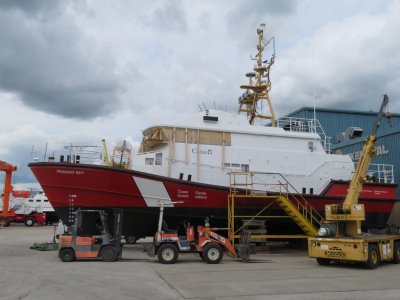
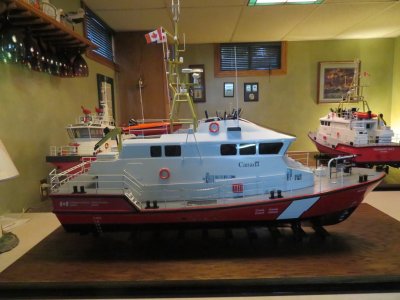
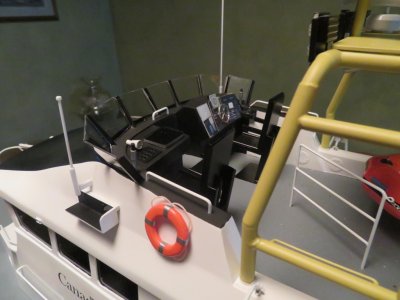

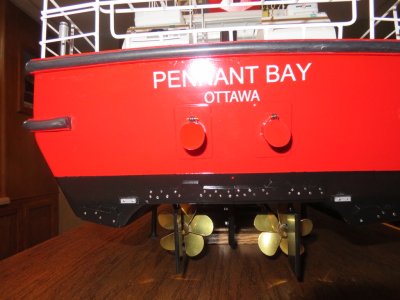




There’s something deeply satisfying about your chosen path: not just crafting with skill, but diving headlong into original research and problem-solving. Dedication to historical accuracy and hands-on ingenuity is a rare and admirable combination. Your focus on modeling vessels that haven't been represented before is especially compelling. It not only keeps the work fresh but also contributes something truly unique to the ship modeling community. And steering clear of commercial plans? Are you making those plans by yourself based on available research? That’s the mark of someone who’s in it for the love of discovery and the challenge of creation.My objective for each project is to make a well crafted historically accurate model. I also strive to make all parts other than cordage and chain myself. I enjoy research that sometimes involves a bit of reverse Engineering. A highly rewarding part of all this is figuring out how to make things. This often requires several tries before arriving at a solution.
I try to build models of vessels that have not been modeled before. I avoid plans prepared by others and marketed to ship model builders.
Roger
Having the same goal and so many contemporary plans and contracts available, there are hundreds of choices that have not been modeled in the past 250-300 years. We would need to live a lot more lifetimes to put a good dent. On the other side, I appreciate what the kit makers go through. There are a lot of choices when all the manufacturers are added up, but they try to put out a kit with a name that is familiar such as Victory. In the case of some like Diana or Enterprize there were a number of ships in their two classes of ships so at least the model builder can choose to have it be one that has not been modeled many times even if only in name.I try to build models of vessels that have not been modeled before.
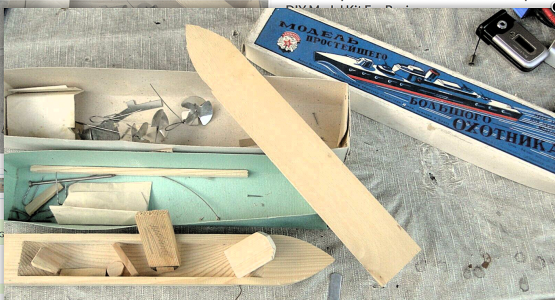

Well said. I enjoyed my first ever wooden build in the 1970s and the builds of today. For some of us an occasional hiatus of various lengths of time still comes around for various reasons but that's OK too as it seems newly fresh when getting back into making sawdust.Enjoy the hobby, no matter your level!

There’s absolutely nothing wrong with building from kits; many of us started (and still build) that way. Kits are a great foundation for learning, refining techniques, and just enjoying the process. That said, it’s great to hear you’re starting to explore replacing parts with your own handmade elements. That kind of customization is where a lot of the fun and satisfaction come in. The Andrea Gail sounds like a perfect opportunity to experiment—swapping out plastic for wood will definitely give it a richer, more authentic feel. Looking forward to seeing how it turns out!To date I'm only a kit builder. I try to stick to the kit plans and instructions as close as I can interpret them. However, I'm itching to replace some molded parts with wood creations as I go forward. The Adrea Gail will be one of those. There is way too much plastic on that 1/30 kit (railings, ladders, etc.). I can make those items out of wood.

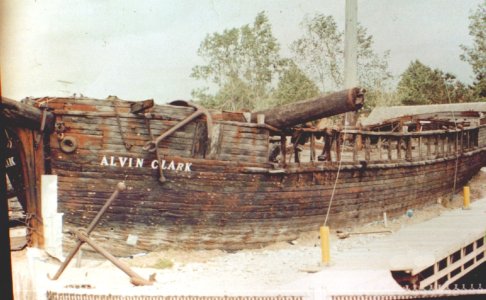
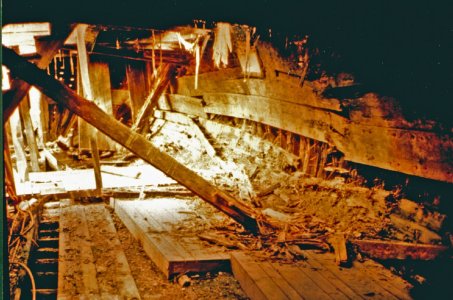


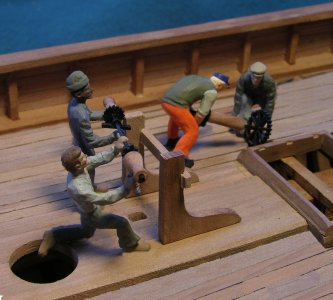
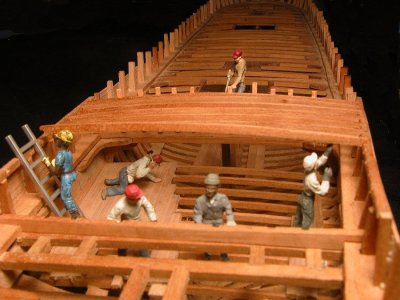
You have great ships models for multiple reasons, the desire for accuracy, the ability to do the historic research, and you have the wood and knowledge of how to build the models due to your relationship and perhaps training from other great modelers.For the purists, tell us: what’s your process for researching ships like the Falcusa or HMS Victory? What resources (books, plans, museum visits) do you swear by to get every plank and rigging knot just right? Share pics of your historically faithful builds and any challenges you faced chasing accuracy.
i went to the wreck spent a week measuring it, documenting it, photographing it
View attachment 518832
went down deep inside and studied its structure
View attachment 518836
once i had my field notes and pictures i drew a set of plans using computer aided drafting
View attachment 518837
then built a 1:48 scale model timber for timber plank for plank. The big one is the Alvin Clark the small one is the gun boat Caustic which was built from scratch using admiralty plans framing is based on documents on ship building of the time and place it was built.
View attachment 518833
down to the number of teeth on the gears
View attachment 518834
with help from a little crew the model is as exact as anyone could get to the actual Alvin Clark,
View attachment 518835
WHY? because there was no kit and this was a piece of maritime history that needed to be documented. Also i wanted to learn how a lake schooner was built and no kit provided that information.
Just because i wanted to and now i have the one and only authentic scale model of the Alvin Clark
it is my own personal master's thesis on the construction and building of a scale model of a Great lakes schooner of 1840 which means nothing to anyone just me
someone had to do it

Interesting take—and I can see where you’re coming from. I think “purist” means different things to different people, which is exactly why the term gets so muddied. Some define it as strict historical accuracy, others see it as staying 100% true to a kit, and now you’ve raised the idea that it can even mean sticking purely to your own imagination, start to finish.the alvin clark project was a one off and on that project i consider it a purists approach to historical accuracy. but i have also created steampunk models totally created out of thin air which you can also call "purists" because it was indeed purely made up something from my imagination.
Could you say the meaning of "purists" approach to a project is something you did from start to finish?
You can even apply the term purists to someone who built a model out of a box exactly how it was designed and intended to be built and not to vary in any way. purely out of the box.
I am far from a purist as any of my models will show my mistakes. Hopefully fewer now than 30 years ago.For the purists, tell us: what’s your process for researching ships like the Falcusa or HMS Victory?


What do you think of these different interpretations of "purist"?
I love this thinking - blending history with imagination in a way that gives the model its own personality. Your backstory for the Xebec is both plausible and dramatic, and that nod to Enlightenment-era innovation adds a clever layer. It’s a great example of how historical curiosity and creative freedom can work together instead of being at odds.Hey @Jimsky , this thread has encouraged me to do a little lateral thinking about my current boat project, the Amati Xebec 1753.
My invented backstory so far is that it was built on the Barbary Coast as a pirate and then taken in battle by the French and used as a privateer.
So what if, when the French were refitting it after capture, the technical and scientific minds of The Enlightenment seized the opportunity to experiment with diagonal bracing, fifty years before Sepping’s ironwork and with true French style…
I like to know the historical details of my ships, their context, how they worked and so on. Then I chose to either build for accuracy or build for drama, sometimes both in the same project.
“I contradict myself? I am large. I contain multitudes.”
Hah...an interesting point, but I think we need to be careful with words like “extremist” or “fundamentalist” - they carry a lot of weight and can shift the tone of a conversation quickly, even unintentionally. In the context of a hobby, most of us are just passionate in different ways, and it’s more productive (and welcoming) to focus on that variety rather than attach labels that could be misread.Perhaps extremist or fundamentalist is nearer the mark? Substitute either of those in the sentences in question and see how it alters the readers’ or writer’s interpretation
